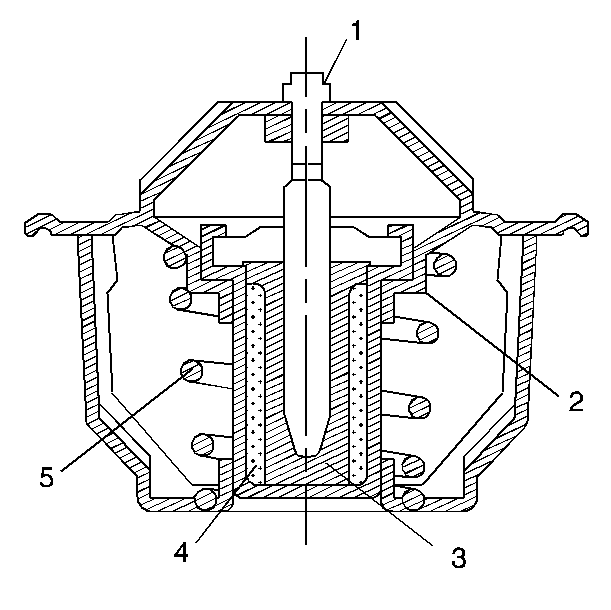The 2.4L (4 cyl.) engine uses a pellet type thermostat in the coolant inlet passage to control the flow of coolant. The 3.4L (6 cyl.) engine uses a pellet-type thermostat in the coolant outlet passage. The thermostat does the following functions:
| • | Provides fast engine warm-up |
| • | Regulates the coolant temperature |

A wax pellet, or power element (4), in the thermostat expands when heated, and contracts when cooled. The valve is connected to the power element. When the wax expands, the piston (3) pushes against the flange and opens the thermostat. As the pellet cools, contraction allows a spring (5) to close the valve. Thus, the valve remains closed while the coolant is cold. This prevents coolant circulation through the radiator, but allows the coolant to circulate through the engine to warm it quickly and evenly.
As the engine becomes warm, the pellet expands and the thermostat valve opens. This lets coolant flow through the radiator, where heat is passed through the radiator walls. This opening and closing of the thermostat valve allows enough coolant to enter the radiator to keep the engine within specified temperature limits.
A 91°C (195°F) thermostat is used on engines where the thermostat is located in the engine coolant outlet. On engines where the thermostat is located in the engine coolant inlet a 82°C (180°F) thermostat is used. Using thermostats rated above these control temperatures is not recommended. Higher temperature thermostats will not provide faster warm-up, since their valves remain tightly closed until the control temperature is reached, as does a lower temperature thermostat. The thermostat must be installed with the pointed end facing toward the radiator. Incorrect installation of the thermostat may cause the engine to overheat.
